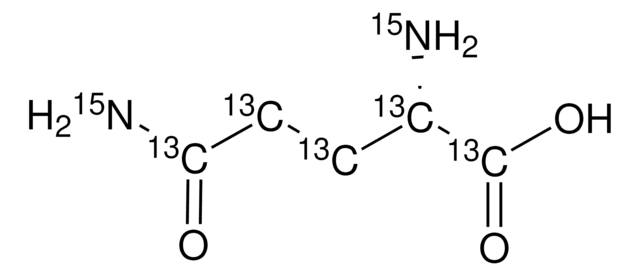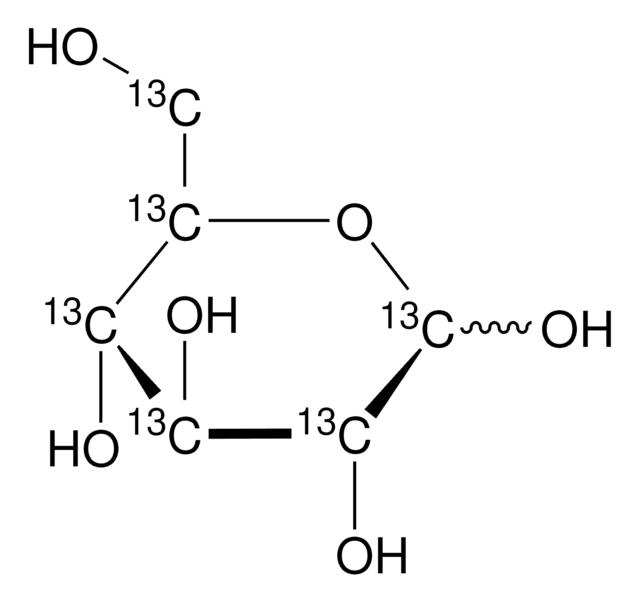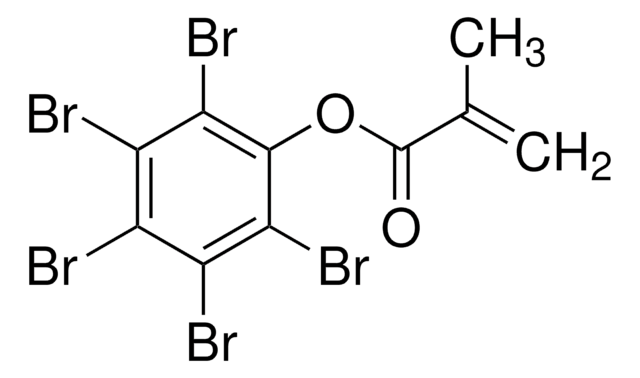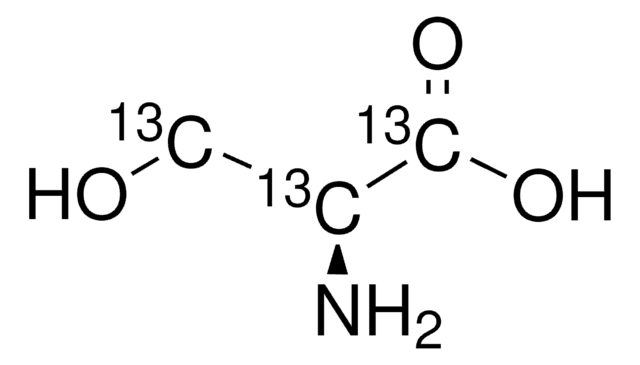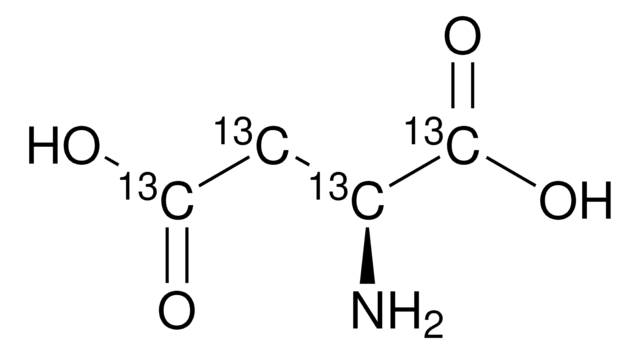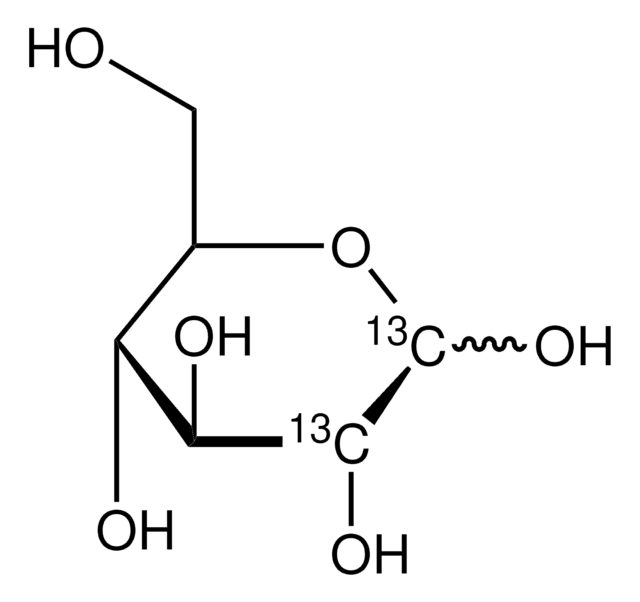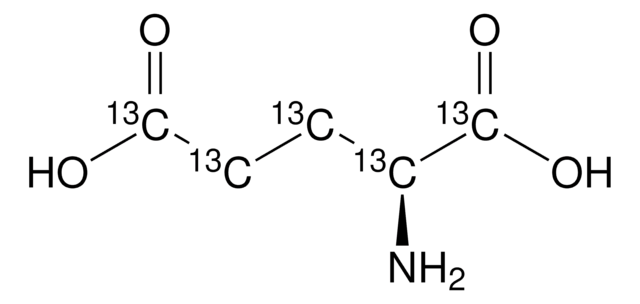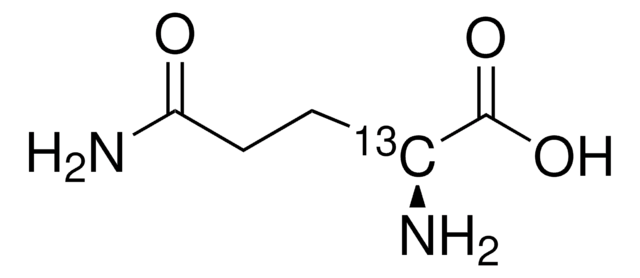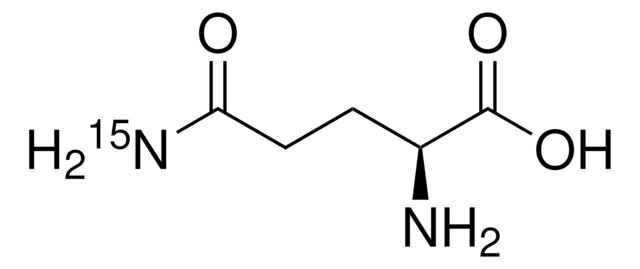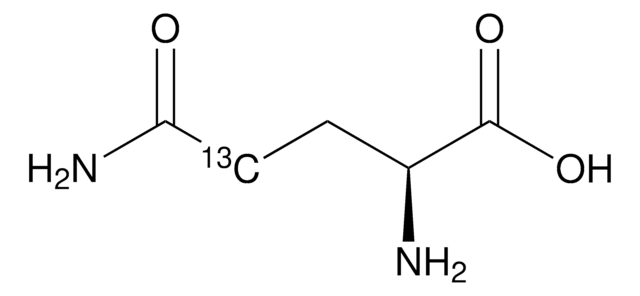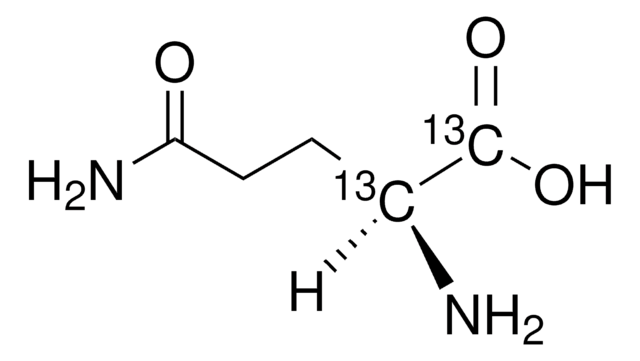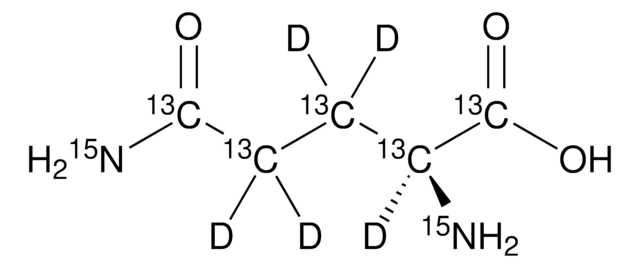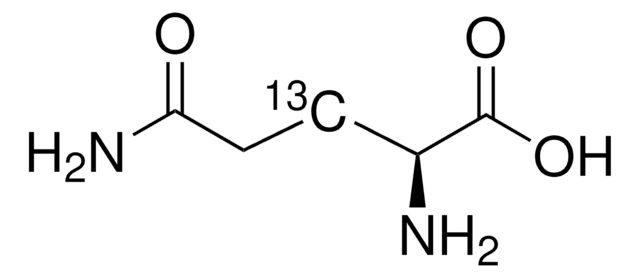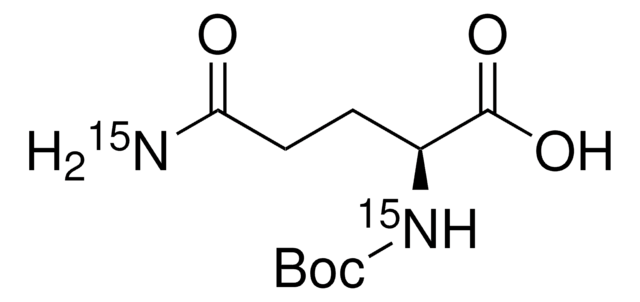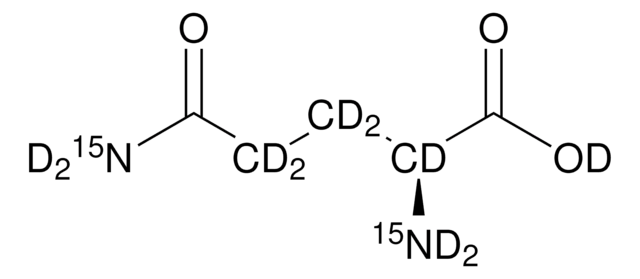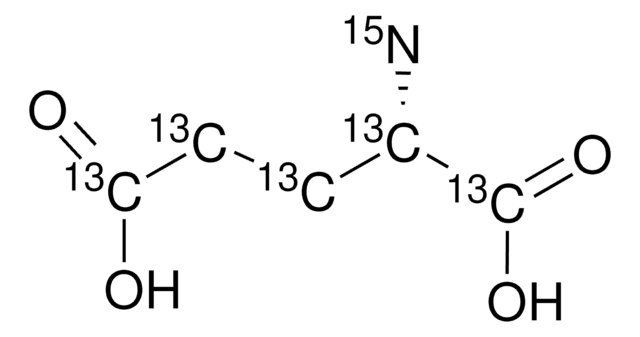Kluczowe dokumenty
605166
L-Glutamine-13C5
98 atom % 13C, 95% (CP)
Synonim(y):
(S)-2,5-Diamino-5-oxopentanoic acid-13C5, L-Glutamic acid 5-amide-13C5, L-Glutamine-ul-13C, 13C Labeled glutamine
About This Item
Polecane produkty
czystość izotopowa
98 atom % 13C
Poziom jakości
Próba
95% (CP)
Formularz
solid
aktywność optyczna
[α]25/D +33.0°, c = 2 in 5 M HCl
mp
185 °C (dec.) (lit.)
przesunięcie masy
M+5
ciąg SMILES
[H][13C@](N)([13CH2][13CH2][13C](N)=O)[13C](O)=O
InChI
1S/C5H10N2O3/c6-3(5(9)10)1-2-4(7)8/h3H,1-2,6H2,(H2,7,8)(H,9,10)/t3-/m0/s1/i1+1,2+1,3+1,4+1,5+1
Klucz InChI
ZDXPYRJPNDTMRX-WIAREEORSA-N
Szukasz podobnych produktów? Odwiedź Przewodnik dotyczący porównywania produktów
Opis ogólny
Zastosowanie
Opakowanie
Kod klasy składowania
11 - Combustible Solids
Klasa zagrożenia wodnego (WGK)
WGK 1
Temperatura zapłonu (°F)
Not applicable
Temperatura zapłonu (°C)
Not applicable
Wybierz jedną z najnowszych wersji:
Masz już ten produkt?
Dokumenty związane z niedawno zakupionymi produktami zostały zamieszczone w Bibliotece dokumentów.
Klienci oglądali również te produkty
Powiązane treści
Analiza struktury białek pomaga w identyfikacji biomarkerów chorób i celów leków kluczowych dla terapii terapeutycznych.
Analiza struktury białek pomaga w identyfikacji biomarkerów chorób i celów leków kluczowych dla terapii terapeutycznych.
Protein structure analysis aids in identifying disease biomarkers and drug targets crucial for therapeutic treatments.
Nasz zespół naukowców ma doświadczenie we wszystkich obszarach badań, w tym w naukach przyrodniczych, materiałoznawstwie, syntezie chemicznej, chromatografii, analityce i wielu innych dziedzinach.
Skontaktuj się z zespołem ds. pomocy technicznej